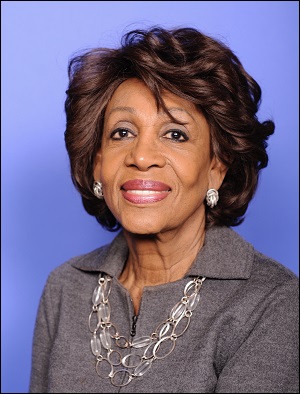By Pam Martens: February 26, 2019 ~
Yesterday, Congresswoman Maxine Waters of California, the Chair of the House Financial Services Committee, released the titles of the hearings she plans to hold during the month of March. Of the hearings held by this Committee in February, none addressed the systemic risk to the U.S. economy from the interconnected mega banks on Wall Street. According to the hearing list released yesterday for the month of March, systemic risks at the mega banks has again gone missing. The only mega bank to be grilled in March will be Wells Fargo, and that will focus on its “pattern of consumer abuses.”
This lack of attention to the most dangerous, interconnected mega banks on Wall Street – JPMorgan Chase, Citigroup, Goldman Sachs, Bank of America and Morgan Stanley – by the newly installed Democratic Chair of the House Financial Services Committee does not bode well for the Democrats – or for the financial health of the country. It was just a decade ago that those same banks and that same systemic risk created the largest economic crash in the United States since the Great Depression. And the same fault lines of that era are still with us today.
Waters’ failure to put systemic risk at the top of her priority list will raise suspicions among the electorate. According to a report by CNBC in late January, JPMorgan Chase CEO Jamie Dimon and Goldman Sachs CEO David Solomon had met separately with Waters shortly after she became the Chair of this powerful oversight Committee. The Wall Street Journal further reported that Waters had planned to call the CEOs of the six largest Wall Street banks to testify at a hearing in March or April. That would have included Dimon and Solomon, who are none too eager to appear before a Congressional Committee.
Maybe that hearing will still move forward in April. But here is what is fishy about highlighting the “pattern of consumer abuses” by Wells Fargo: That bank is not a felon. JPMorgan Chase pleaded guilty to two criminal felony counts in 2014 for its role in the Bernie Madoff matter and pleaded guilty again the very next year to one count for its role in rigging foreign currency markets. Citigroup is also a felon, having pleaded guilty to one count in the same foreign currency rigging matter as JPMorgan Chase. Both banks have a serial pattern of abuse. The serial crime spree at JPMorgan Chase became so pronounced that two trial lawyers, Helen Davis Chaitman and Lance Gotthoffer, published a breathtaking book on the matter in 2016, noting the similarities to the Gambino crime family. (See here for Citigroup’s rap sheet.)
As for its contribution to systemic risk on Wall Street, Wells Fargo does not even register among the top five mega banks, according to the most authoritative source on the matter – the Office of Financial Research (OFR). That Federal office, part of the U.S. Treasury Department, was created under the 2010 Dodd-Frank financial reform legislation to keep Federal regulators on the Financial Stability Oversight Council (F-SOC) well informed on systemic risks to the financial system as a whole in order to prevent another 2008-style implosion on Wall Street.
In 2015, OFR released an in-depth report on systemic mega bank risks that were still prevalent on Wall Street. The OFR researchers (Meraj Allahrakha, Paul Glasserman, and H. Peyton Young) wrote the following:
“The larger the bank, the greater the potential spillover if it defaults; the higher its leverage, the more prone it is to default under stress; and the greater its connectivity index, the greater is the share of the default that cascades onto the banking system. The product of these three factors provides an overall measure of the contagion risk that the bank poses for the financial system. Five of the U.S. banks had particularly high contagion index values — Citigroup, JPMorgan, Morgan Stanley, Bank of America, and Goldman Sachs.”
One of the reasons these five banks have such interconnectivity risk is that they are also the largest holders of insane levels of derivatives. According to the Federal regulator of national banks, the Office of the Comptroller of the Currency (OCC), as of September 30, 2018 these five bank holding companies held the following in notional (face amount) of derivatives: JPMorgan Chase $58.2 trillion; Goldman Sachs $56.2 trillion; Citigroup $55.7 trillion; Bank of America $36.4 trillion; and Morgan Stanley $33.3 trillion.
To put that systemic interconnectedness in perspective, the 25 largest banks engaged in derivatives held a total of $271 trillion notional amount as of September 30, 2018. Of those 25 banks, just the five listed above held 88 percent of the total. (See Table 2 in the Appendix at this OCC link.)
It’s long past the time for the U.S. Senate Banking Committee and the House Financial Services Committee to move past simple crimes like Wells Fargo employees hoping to qualify for bonuses by opening multiple checking and savings accounts for their customers without their consent and perform a deep-dive investigation into the dark-curtained areas at the Wall Street mega banks that are highly likely to crash the U.S. financial system and economy again. Those two areas are derivatives and the unregulated stock exchanges known as Dark Pools that are owned and operated in the dark by the mega banks on Wall Street.
The public has had it with Congressional Committees going through the motions of investigating and reforming Wall Street. It’s time for transparent action.


